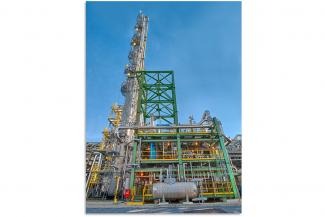A recently released report, “Safe Geologic Storage of Captured Carbon Dioxide: Two Decades of DOE’s Carbon Storage R&D Program in Review” dives into how the department and NETL and other national laboratories, research organizations, and industry stakeholders have worked collaboratively to meet the challenge of addressing the emission of greenhouse gases while ensuring the continued use of fossil fuels that underpin our nation’s economic prosperity.
One of the most successful pillars of DOE’s Carbon Storage Program is the NETL-managed Regional Carbon Sequestration Partnership (RCSP) Initiative, which began in 2003 with a characterization phase that focused on collecting and analyzing data on potential reservoirs and assembling resources to test CO2 storage.
This effort culminated in the development of a standard, consistent methodology for assessing geologic reservoirs and estimating the volumes of CO2 that could be stored, an effort led by NETL. The methodology has since been applied in a series of Carbon Storage Atlases for the U.S. and portions of Canada.
Following the development of a suitable methodology was the second phase of the RCSP Initiative, which included 19 small-scale field projects during which more than one million metric tons of CO2 were safely injected. The projects were performed across numerous potential storage settings including eight projects in depleted oil and gas fields, five in coal seams unsuitable for mining, five in clastic and carbonate saline formations, and one in basalt.
These small-scale tests provided the foundation for the development phase field projects, which commenced in 2008. Results provided a more thorough understanding of permanent CO2 storage in a variety of geologic formations. The experience gained from these projects helped support regulatory development and commercial deployment of geologic storage. The formations tested are expected to have the potential to store centuries of CO2 emissions from stationary sources.
More than 11 million metric tons of CO2 were stored in geologic formations via RCSP large-scale field projects with no indications of negative impacts to either human health or the environment.
The success of RCSPs in validating secure storage at their respective sites was largely based on the deployment of new or improved monitoring technologies. Technology research by the RCSPs and NETL targeted demonstration of robust and reliable monitoring systems.
Another example of NETL’s support is the Carbon Storage Assurance Facility Enterprise (CarbonSAFE) Initiative. These projects focus on development of geologic storage sites for the storage of 50+ million metric tons (MMT) of CO2 from industrial sources. CarbonSAFE projects aim to improve understanding of project screening, site selection, characterization, and baseline monitoring, verification, accounting, and assessment procedures. These efforts will contribute to the development of 50+ MMT storage sites in anticipation of injection by 2026.
“When it comes to powering the future and maintaining a clean environment with robust human health, we don’t have to choose. We can have all of the above,” said DOE Office of Fossil Energy’s Darin Damiani, a co-author of the report. “In fact, carbon storage has been occurring naturally. Geological storage of CO2 has been a natural process in the upper crust for hundreds of millions of years, resulting in accumulations of CO2 alone or in combination with other fluids such as hydrocarbons.”
CCUS can also have significant economic potential. For more than 40 years, the U.S. has used CO2 for enhanced oil recovery from fields depleted following primary production and subsequent water flooding. Over this time, more than 600 million metric tons of purchased CO2 have been used in the southwest U.S. Permian Basin alone.
According to the report, 85 percent of the CO2 used for enhanced oil recovery in the U.S. is extracted from natural geologic sources where CO2 generated from thermogenic and biogenic processes has accumulated for thousands if not millions of years. However, the mass of CO2 used for enhanced oil recovery is small compared to the 5.2 billion metric tons emitted in the U.S. each year from industrial processes, electricity generation, vehicles, home heating, and all the other forms of energy production or conversion, thus demonstrating the need for safe geologic storage capabilities
The challenge going forward for NETL and its partners in industry and academia is lowering costs of the CCUS processes to incentivize widespread adoption and commercialization on a large scale. By reducing financial risks via more advanced technology, NETL and DOE continue their mission to ensure the nation’s energy security.
The entirety of “Safe Geologic Storage of Captured Carbon Dioxide: Two Decades of DOE’s Carbon Storage R&D Program in Review” can be viewed here.
NETL is a U.S. Department of Energy national laboratory that produces technological solutions for America’s energy challenges. From developing creative innovations and efficient energy systems that make coal more competitive, to advancing technologies that enhance oil and natural gas extraction and transmission processes, NETL research is providing breakthroughs and discoveries that support domestic energy initiatives, stimulate a growing economy, and improve the health, safety, and security of all Americans. Highly skilled men and women at NETL’s sites in Albany, Oregon; Anchorage, Alaska; Houston, Texas; Morgantown, West Virginia; and Pittsburgh, Pennsylvania conduct a broad range of research activities that support DOE’s mission to advance the national, economic, and energy security of the United States.




